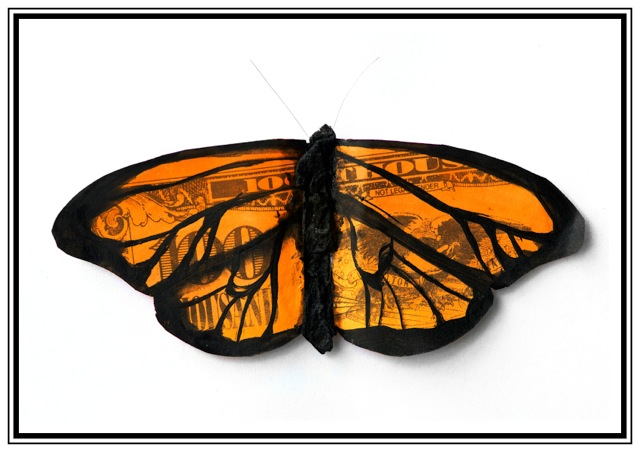Sonja Bales is a 14 year old artist. She calls this series, "Vegan Lepidoptry."
After carefully study of real insects, Sonja takes her art beyond
mimicry, using maps, currency,
old text books, and decorative papers and plastic to make these new creatures.
Sonja's work speaks to the different roles insects have in our culture: as exotic objects of beauty,
as fragile migratory species, and as dream images....
 |
| George by Sonja Bales ©2012 used with permission of artist |
Terrible.
I decided to make a vegan butterfly using plastic, but was not content with the result. I turned to paper. I felt the butterflies needed to be carefully paired with each swatch of paper.
I'm an impulsive artist, and once something's done, there's always plenty more to beautify."
 |
| Sonja Bales ©2012 used with permission of artist |
 |
| Sonja Bales ©2012 used with permission of artist |
 |
| Sonja Bales ©2012 |






















